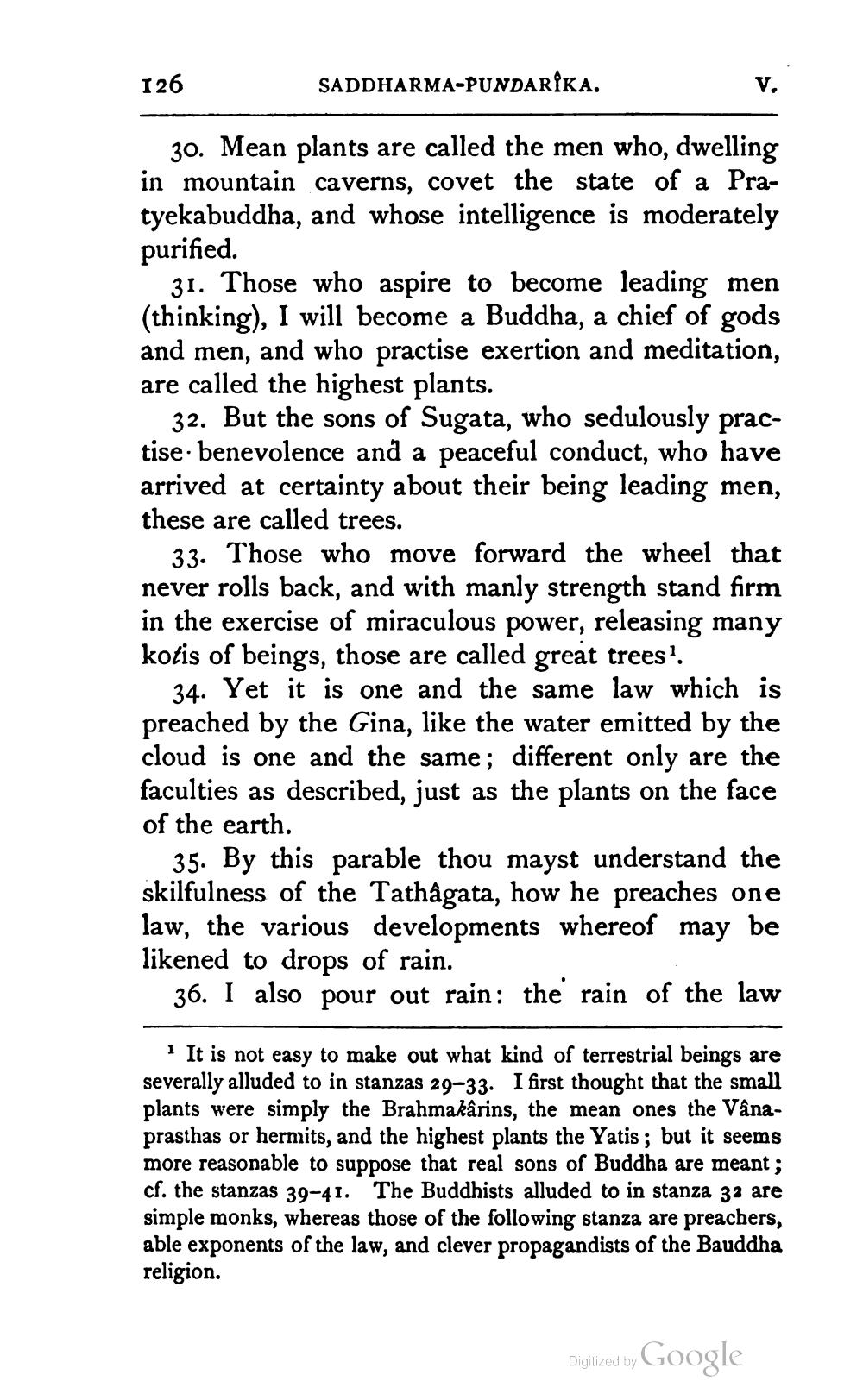________________
126
SADDHARMA-PUN
30. Mean plants are called the men who, dwelling in mountain caverns, covet the state of a Pratyekabuddha, and whose intelligence is moderately purified.
31. Those who aspire to become leading men (thinking), I will become a Buddha, a chief of gods and men, and who practise exertion and meditation, are called the highest plants.
32. But the sons of Sugata, who sedulously practise. benevolence and a peaceful conduct, who have arrived at certainty about their being leading men, these are called trees.
33. Those who move forward the wheel that never rolls back, and with manly strength stand firm in the exercise of miraculous power, releasing many kotis of beings, those are called great trees?
34. Yet it is one and the same law which is preached by the Gina, like the water emitted by the cloud is one and the same; different only are the faculties as described, just as the plants on the face of the earth.
35. By this parable thou mayst understand the skilfulness of the Tathagata, how he preaches one law, the various developments whereof may be likened to drops of rain.
36. I also pour out rain: the rain of the law
It is not easy to make out what kind of terrestrial beings are severally alluded to in stanzas 29-33. I first thought that the small plants were simply the Brahmakarins, the mean ones the Vânaprasthas or hermits, and the highest plants the Yatis; but it seems more reasonable to suppose that real sons of Buddha are meant ; cf. the stanzas 39-41. The Buddhists alluded to in stanza 32 are simple monks, whereas those of the following stanza are preachers, able exponents of the law, and clever propagandists of the Bauddha religion.
Digitized by Google




